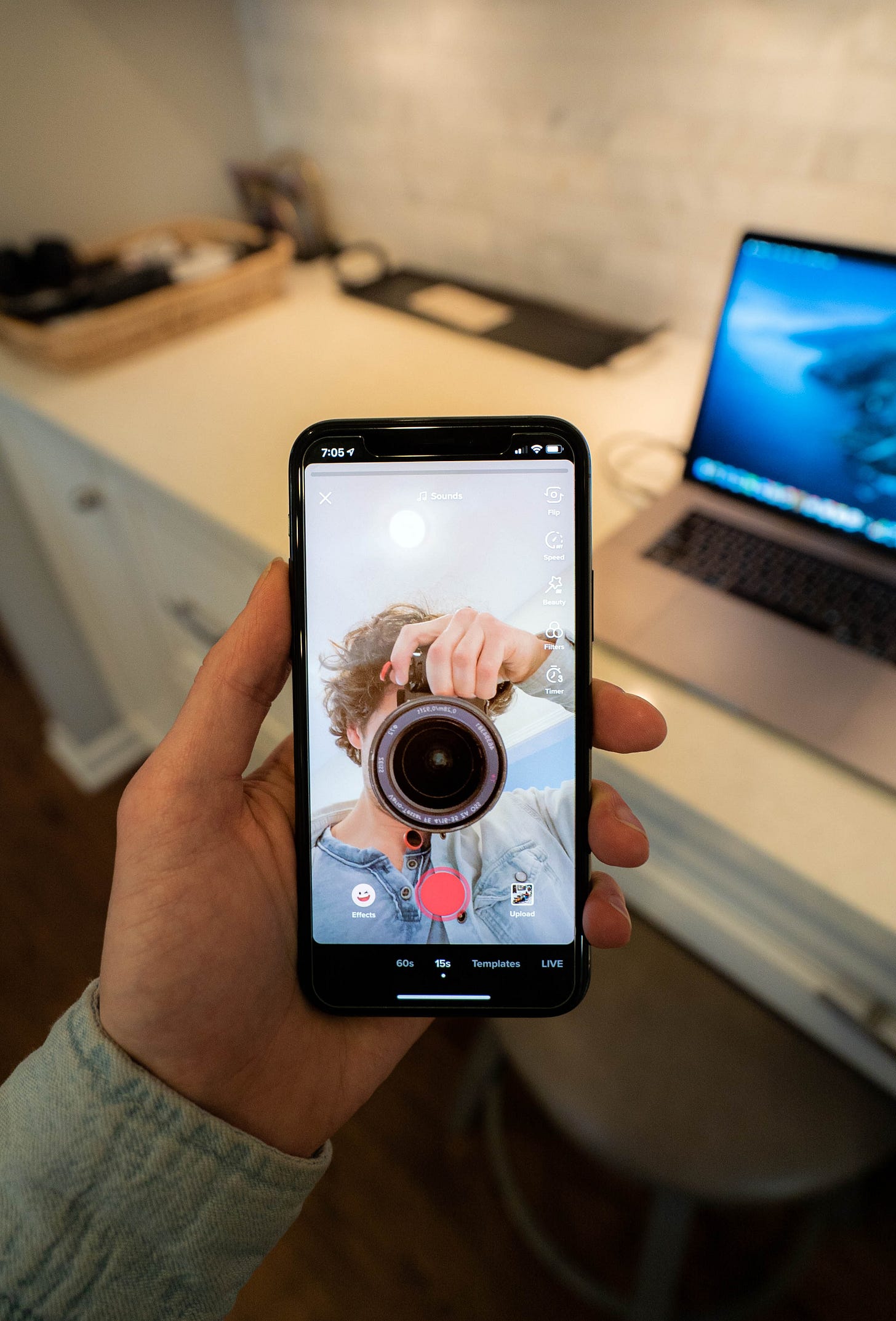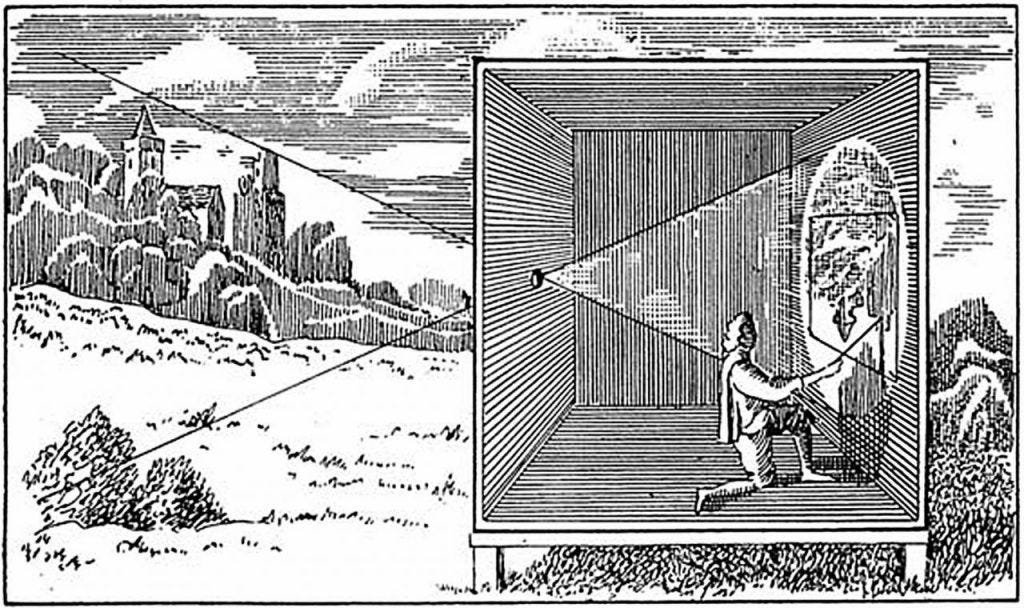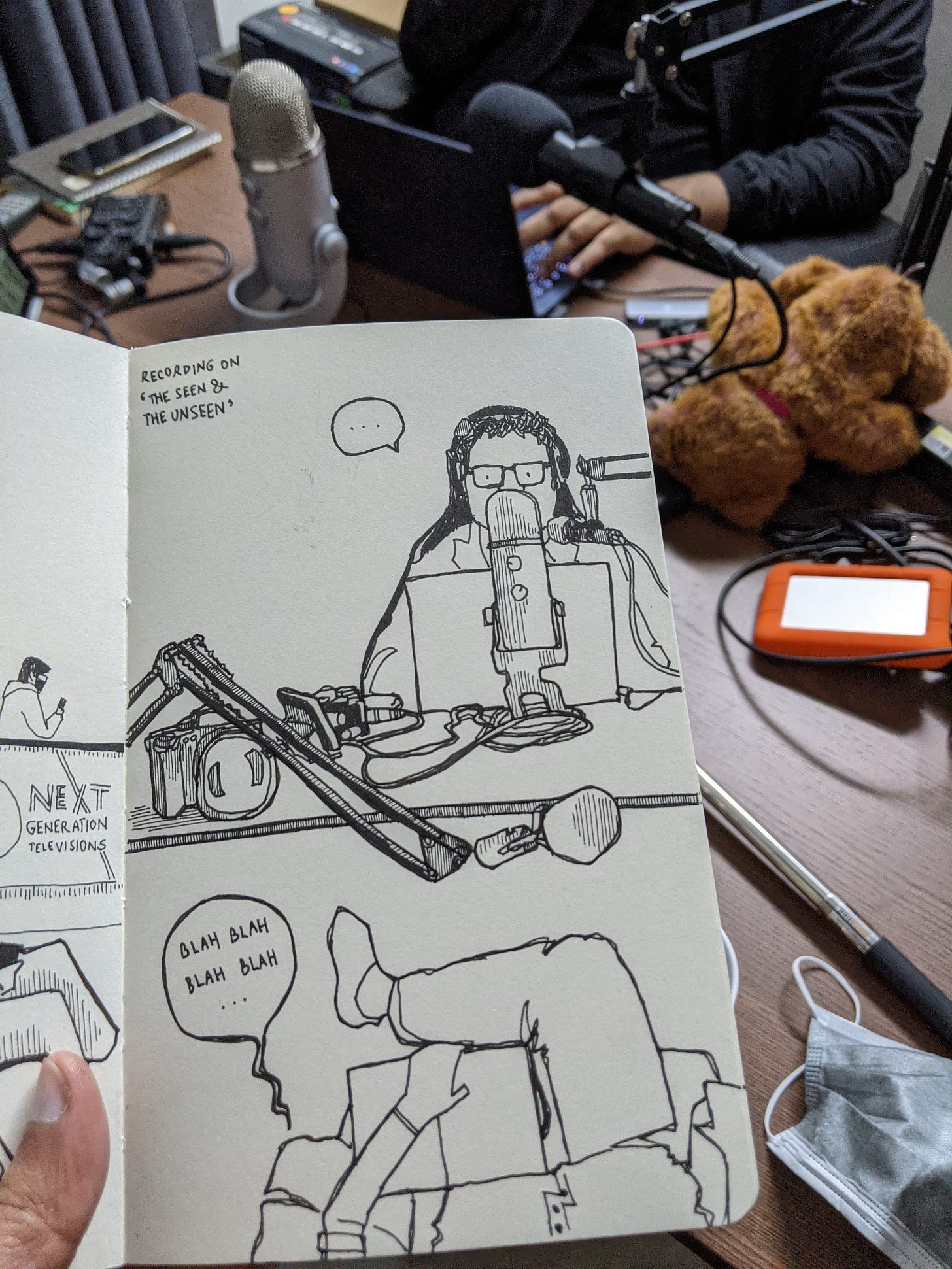Insider #19 - Would Da Vinci make a TikTok channel?
ideas from speaking on the seen/unseen podcast (part i)
👋🏼 Hello, Insiders.
(and everyone else!)
This week I was a guest on my favourite podcast!
Not many people get the chance to use that sentence. I guess that makes me a lucky person.
On The Seen & The Unseen with Amit Varma, I was part of a 5 hour long conversation about my journey to becoming an artist, the detours I took along the way (such as getting a Master’s degree in engineering), the philosophies that guide my work/life, and my ideas about the creator economy.
Listen to the episode below, or catch a link to another streaming service here.
Over the next couple of weeks, I will touch upon the various points we raised in this conversation, and dive deeper into some of the ideas I shared. Today’s post is the first of a 5-part series.
This series is being written exclusively for SneakyArt Insiders. Insiders are the readers who support my independent work as a writer, artist and podcaster. If you are a free reader, you are seeing a paywalled version. To read the full piece and join the comments section, consider becoming an Insider!
🚀 Some Praise for the Episode
Both of them are past guests of the podcast and brilliant in their respective fields, so colour me grateful!
👨🏻🎨 What would Da Vinci do?
Amit started off with an intriguing question - “If Da Vinci and Rembrandt were alive today, would they be doing the same things they did then?”
The question is interesting in two contexts -
the progress of the creator economy in the last two years.
the last couple of decades of the Internet-era, which have transformed long-standing ideas about art, literature, and communication.
We discuss this evolution in detail later in the conversation, but I wanted to first address a lingering anachronism I have observed.
I said,
“When people look back at the art of people they admire, they transpose them to the current moment doing that same thing. Someone looks at Rembrandt and decides to be a fine artist. But he was a fine artist of his time, and they’re trying to be a fine artist in the 21st century, using similar tools. And that’s a strange decision, in my opinion.”
The smaller mistake is that we may neglect to account for differences in circumstances, personality, and privileges. But the larger mistake is to do it for a person who lived hundreds of years before us, in an entirely different ecosystem of arts-patronage, influenced by different cultural ideas of artistic expression and communication.
My take,
“It’s difficult to think about what someone [historical] would precisely do, but the easier route is to think about the motivations they had in the time that they were alive. And how those motivations can be the same for us today in the time that we are alive.”

With that in mind, I claim that if Da Vinci was alive today he might be a successful TikToker and YouTuber. On his YouTube channel he would unveil his latest inventions and broadcast his ideas in hour-long videos. On his TikTok he would post time-lapse videos of himself painting enigmatic ladies with mysterious smiles, set to trendy pop music.
In my opinion both Rembrandt and Da Vinci would use various kinds of media, with a preference for digital art over traditional forms. I say this because we know both of them assimilated the latest technologies of the time into their work - consider Da Vinci’s use of camera obscura, or Rembrandt’s printmaking.
So if you want to follow in their footsteps, maybe ditch the oils and buy an iPad?
A part of Amit’s question - “What would they do today?” - is motivated by the particular freedoms we enjoy in present times. This is, in fact, the foundation of our whole conversation.
I said -
“There has never been a better time to be an artist.”
Not only do I believe this is true, I also hold that things are getting better every year.
Such are these unprecedented times! Artists have the privilege to do things today that were unthinkable even just a couple of decades ago - building a global audience, creating a brand, making direct sales, and providing value directly to fans without the intervention of intermediaries.
To be clear, this is work. None of it is easy. And perhaps for that reason a lot of artists speak of them as a burden. Later, I say -
“Any artist asking to not have to do non-art things is asking [us] to go back to the past. And I have no patience for that.”
I say this because, fundamentally, it would be impossible for someone like me to be a successful artist in any other time in history. I did not go to art school. I do not know publishers or gallerists or curators. I have not had the privilege of living in a place where I have a support system or insider network. It is only in today’s time that I can do all the things I do - including writing this piece to you right now, wherever you may live in the world.
So, I am glad to be alive today.
🌏 A Question For You
In your life, in your world, have you had to negotiate gatekeepers? Over the years have you seen their influence decrease?
Has the internet given you great freedoms - as a writer, artist, fan, or reader - that your real-world circumstances could not have?
I would love to hear your perspective on this.
🔐 Who Needs Gatekeepers?
Amit next’s question was another mind-bender -
The current population of Versova (a neighbourhood in Mumbai) being greater than all of Europe during Da Vinci’s time, statistically there should be better art being made in Versova today than there ever was in Da Vinci’s time in Europe. This argument is strengthened by the fact that Versova’s present population has infinitely better access to art materials, art history, and unlimited learning resources.
So why don’t we know of the Leonardo Da Vinci of Versova? Is art today being stifled by our gaze back in history, and by snobbish attitudes towards new media? For that matter, is anyone regarded as the Da Vinci of TikTok?









